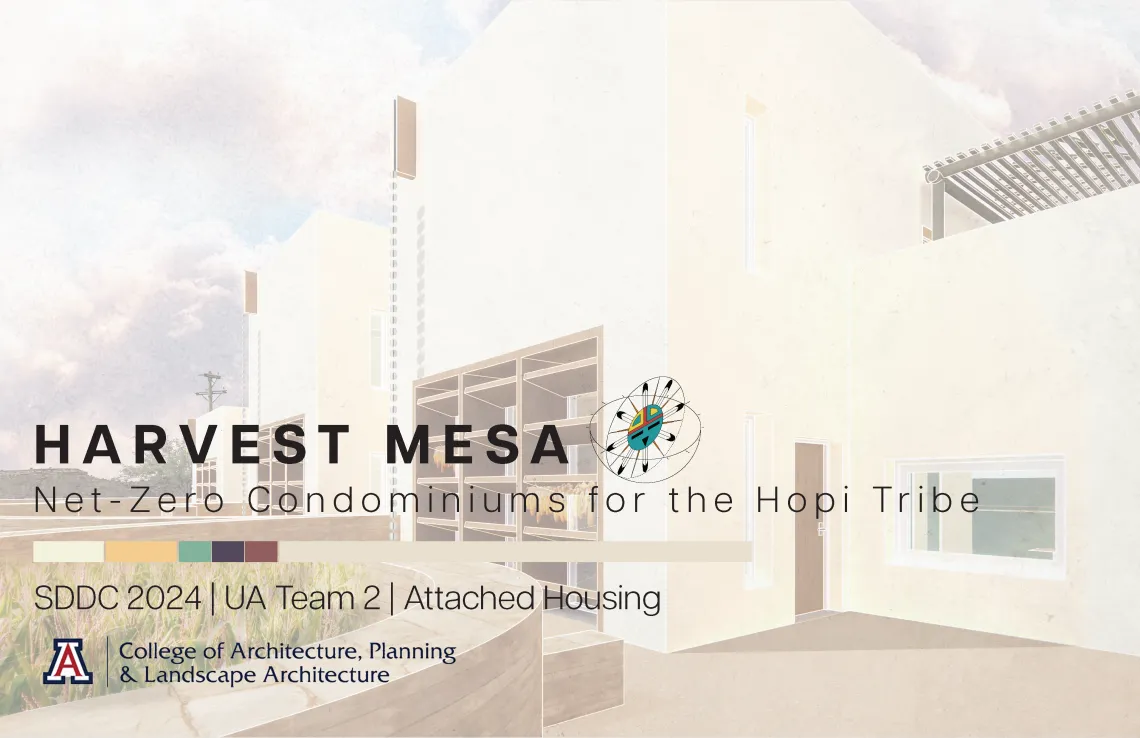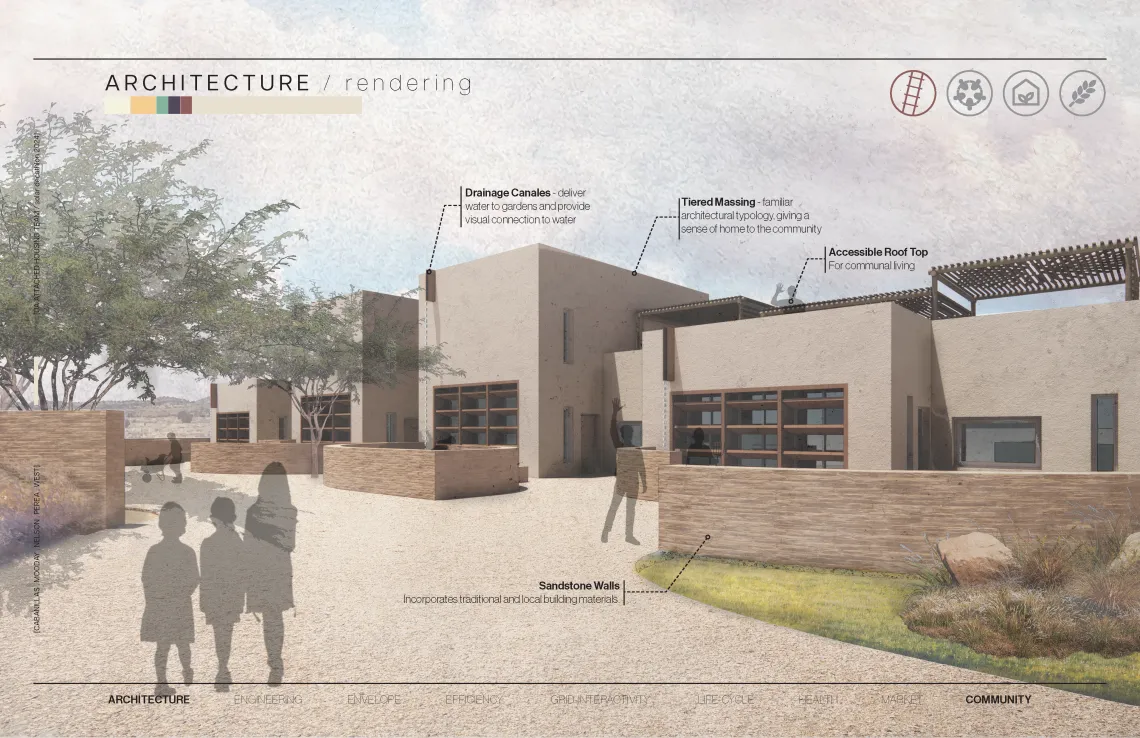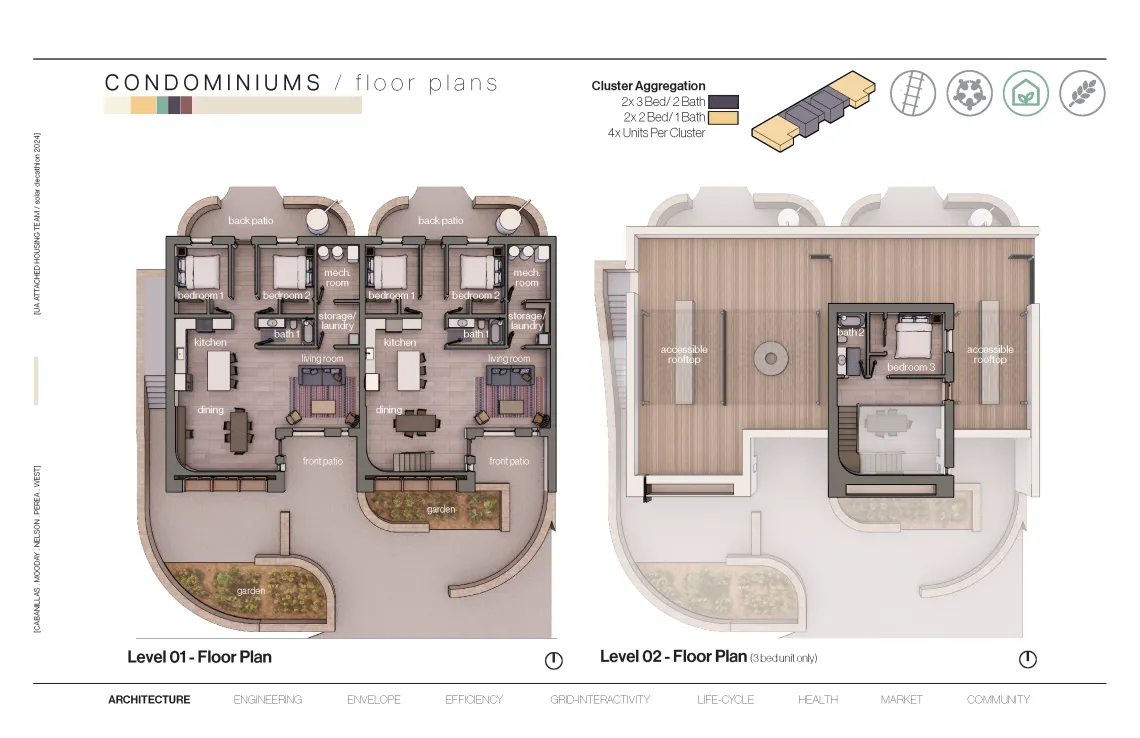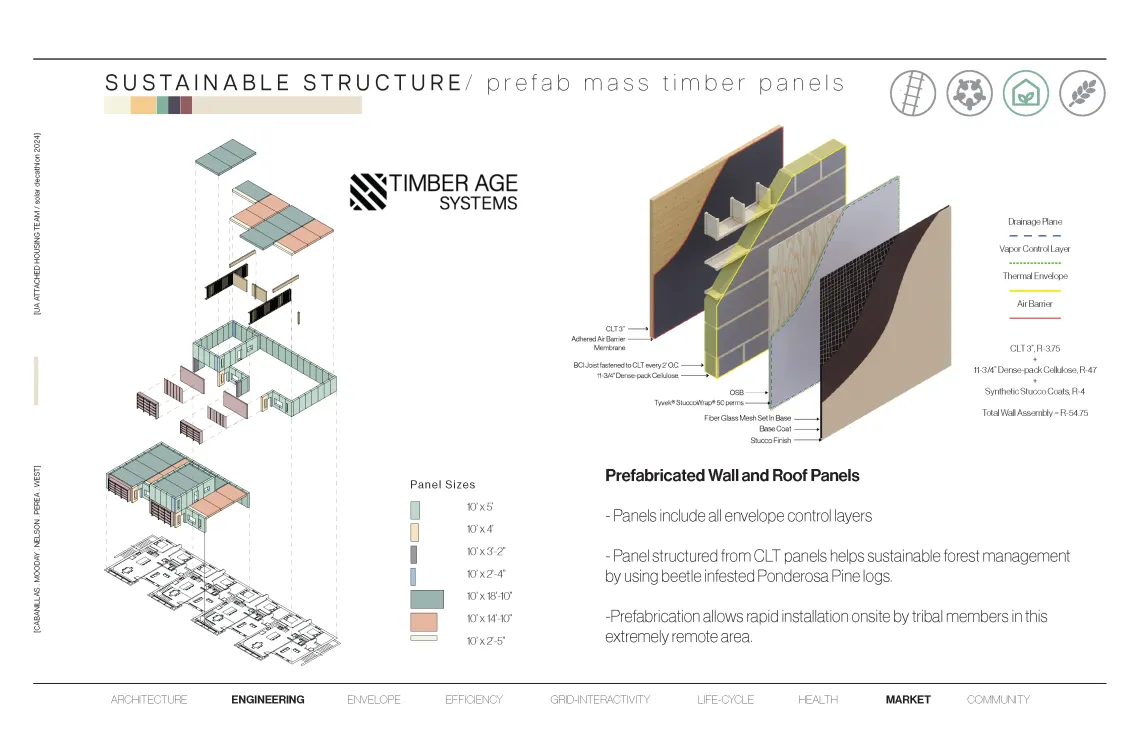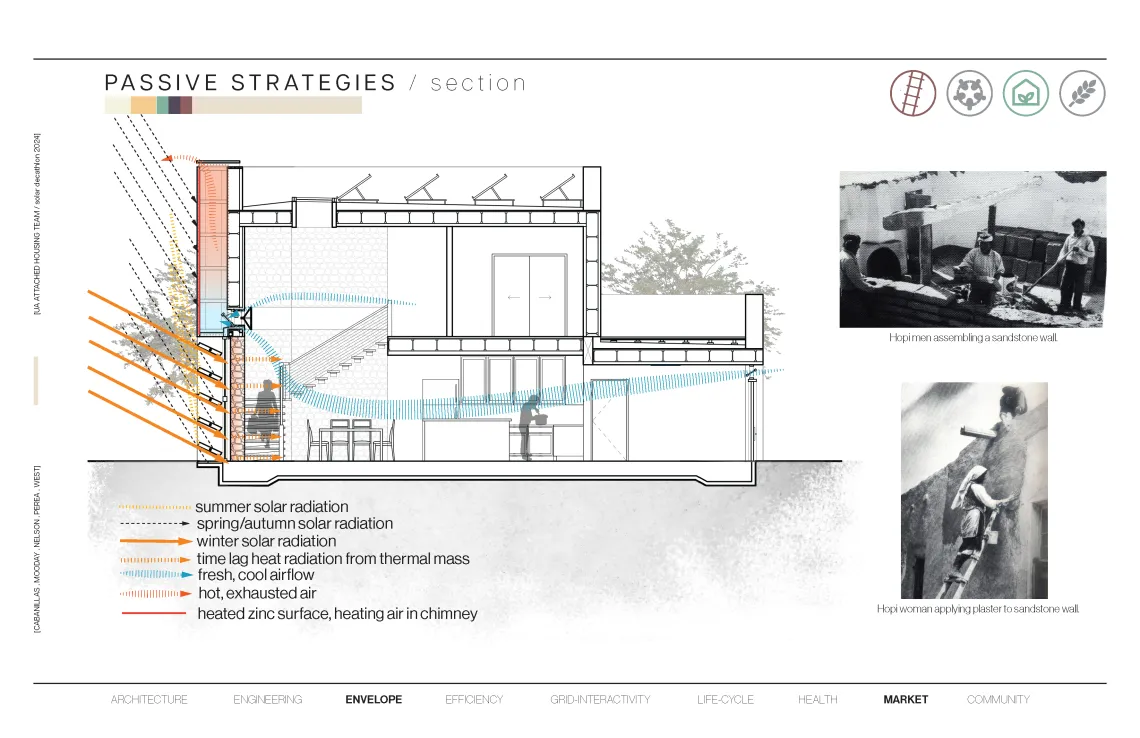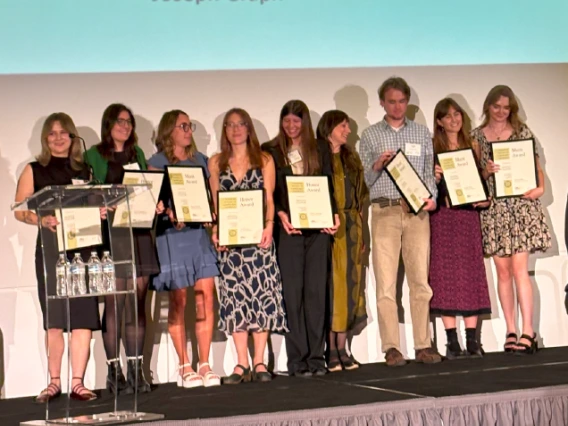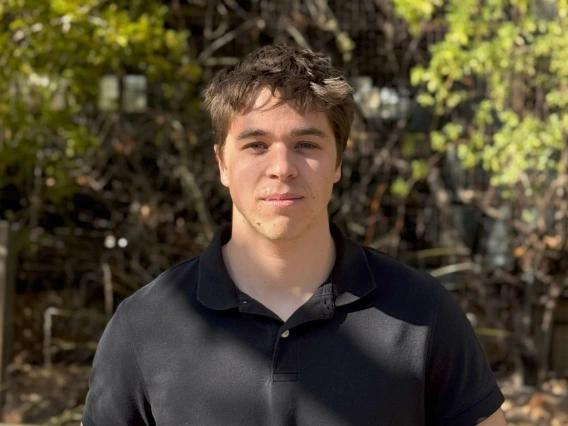UArizona CAPLA teams excel in Solar Decathlon, clinches Grand Winner
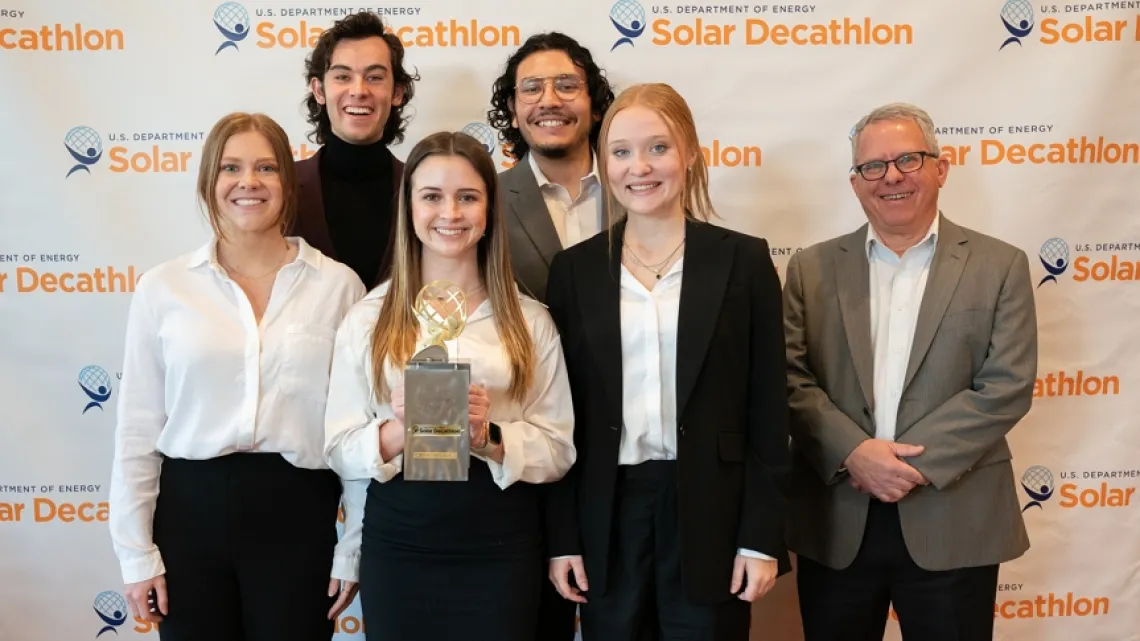
From left, Emme Mooday, Jedidiah Perea, Olivia Nelson, Pablo Cabanillas, Jordan West, and Adjunct Lecturer David Brubaker. The fourth-year architecture students clinched 1st place in the Attached Housing Division and was named the 2024 Design Challenge Grand Winner in the 2024 Department of Energy Solar Decathlon Design Challenge Competition.
U.S Department of Energy / Solar Decathlon
The University of Arizona College of Architecture, Planning and Landscape Architecture continues its streak of success in the Department of Energy Solar Decathlon Design Challenge Competition, with its three teams clinching prestigious awards and recognition, including the 2024 Design Challenge Grand Winner.
Hosted annually by the U.S. Department of Energy, the Solar Decathlon Design Challenge brings together students worldwide to present innovative, low-carbon building designs addressing climate resilience, embodied carbon, retrofitting existing buildings, community impact, and more.
This year, CAPLA teams, comprising fourth-year architecture students, competed alongside students from 93 other institutions representing 18 countries.
The Harvest Mesa team comprised of Pablo Cabanillas, Emme Mooday, Olivia Nelson, Jedidiah Perea, and Jordan West, clinched 1st place in the Attached Housing Division and was named the 2024 Design Challenge Grand Winner.
Collaborating with the Hopi Tribe, they designed 24 eco-friendly rowhouses integrating passive design techniques and a microgrid, promoting energy sovereignty for the community.
“I was shocked and overwhelmingly excited by the announcement,” Perea said. “Our team was jumping up and down. The other collegiate teams presented extremely well-done projects, making the announcement that much more meaningful.”
A second team comprised of Jeannell Hilton, Ashlea Hume, Colleen Barbanti, Chloe O’Hail, and Travis Reihner earned 2nd place in the Multifamily Building Division. Their project featured a three-level structure with the first floor dedicated to community needs such as a bookstore, café, and market. The upper floors housed either 4-bedroom or 2-bedroom units, with a rooftop greenhouse and terrace.
Hume said the jurors commended their team for their intensive material research and selection, especially because they used materials that were both healthy for the environment and its occupants. She added that the experience of delving into topics such as life cycle analysis, budget assessment, mechanical, electrical, and plumbing plans were all areas they had to push themselves.
“The people we met and connections we made at Solar Decathlon opened our eyes to the abundant opportunities in the field of sustainable built environments,” Hume said. “The experience filled us with hope for the future and renewed our passion for our careers in architecture and beyond.”
The third team, competing in the Education Building Division, comprised Hamad Alajmi, Khaled Alenezi, Jelani Hampton, Christian MacKay, Alexio Mora, and Nikita Rafikov. They were among the top ten finalists in the international competition.
A common theme across the CAPLA team projects was their collaboration with the Hopi Tribe, facilitated through the Native Peoples Design Coalition. The coalition, housed within the Drachman Institute and led by CAPLA Senior Lecturer Laura Carr, reached out to Adjunct Lecturer and Solar Decathlon Advisor David Brubaker to facilitate the partnership.
Together, the students visited the Hopi Tribe and met with community leaders to gain a better understanding of the culture and design needs. Coincidentally, the requirements of the Hopi community aligned with the goals for the Solar Decathlon, making the partnership a perfect fit.
“The overarching theme of the project was the Hopi people’s long tradition of sustainability, which is required to survive in their dry climate,” Brubaker said. “Their history of dry farming and land use influenced all our designs. We also took inspiration from their traditional buildings and combined those forms with the latest building science techniques.”
For example, the Harvest Mesa team incorporated local sandstone knowledge from the Hopi Tribe to implement a Trombe wall and solar chimney for passive heating and cooling.
A Trombe wall is a passive solar heating system consisting of a thick wall that absorbs sunlight during the day and releases heat into a building at night, helping regulate temperature. A solar chimney, on the other hand, is a passive ventilation system that utilizes solar energy to create natural airflow within a building by heating air in a vertical shaft, inducing convection currents.
In the Trombe wall, the team used sandstone to absorb and re-radiate heat to provide 24-hour heating and reduce mechanical loads by 49 percent. In the solar chimney, air is heated and rises, drawing cooler air through the building, Perea said.
“The students practiced one of the most important skills of being an architect--listening to their clients,” Brubaker said. “They took that key element and combined it with their design skills to create culturally appropriate sustainable buildings.”
A CAPLA alumnus, Brubaker ’86 has over 40 years of experience practicing architecture. He is also a certified Phius consultant, which has been instrumental in guiding his students toward practical design solutions based on the latest building science technology and meeting Phius Zero standards.
The Phius Zero Standards, set by the Passive House Institute US (PHIUS), aim to create ultra-low energy buildings that achieve net-zero energy consumption annually, producing as much energy as they consume for heating and cooling.
“This challenge was a great example of what all architecture truly is - combining art and science in a way that that is sensitive to the client’s requirements and culture, while using the latest techniques of building design and science,” Brubaker said.
CAPLA has a rich history of success in the competition, placing multiple teams as finalists or winners in each of the last four years. In 2023, a team took third place in the Attached Housing Division, while the preceding year saw another team chosen as the Design Challenge Grand Winner for Commercial Divisions.
CAPLA’s track record in the Solar Decathlon Competition is demonstrative of the our commitment to fostering an environment for students to solve real world problems, said Ryan Smith, director of the School of Architecture.
“Our students’ Solar Decathlon victory demonstrates their commitment, knowledge, and proficiency in environmental and social justice in architecture,” Smith said. “These students are the change makers of tomorrow, and this win is an indication of the caliber of our wonderful students and committed faculty.”
While the students’ accomplishments are celebrated, the true impact lies in their personal and professional development.
“There are so many practical skills we gained, such as how to lay out a mechanical room, or design a strategy for collecting water,” Perea said. “I personally enjoyed going into the details of our Trombe wall and solar chimney, rarely in school do we get to design these small details, and having this opportunity allowed us to practice skills that we otherwise would not have.”
Similarly, the students learned valuable teamwork skills, identifying each other’s strengths, delegating tasks, and setting clear goals for each team member.
“Becoming experts in our designated areas of the building not only prepared us for the competition but also ensured that each team member knew which questions they were responsible for addressing,” Nelson said.

